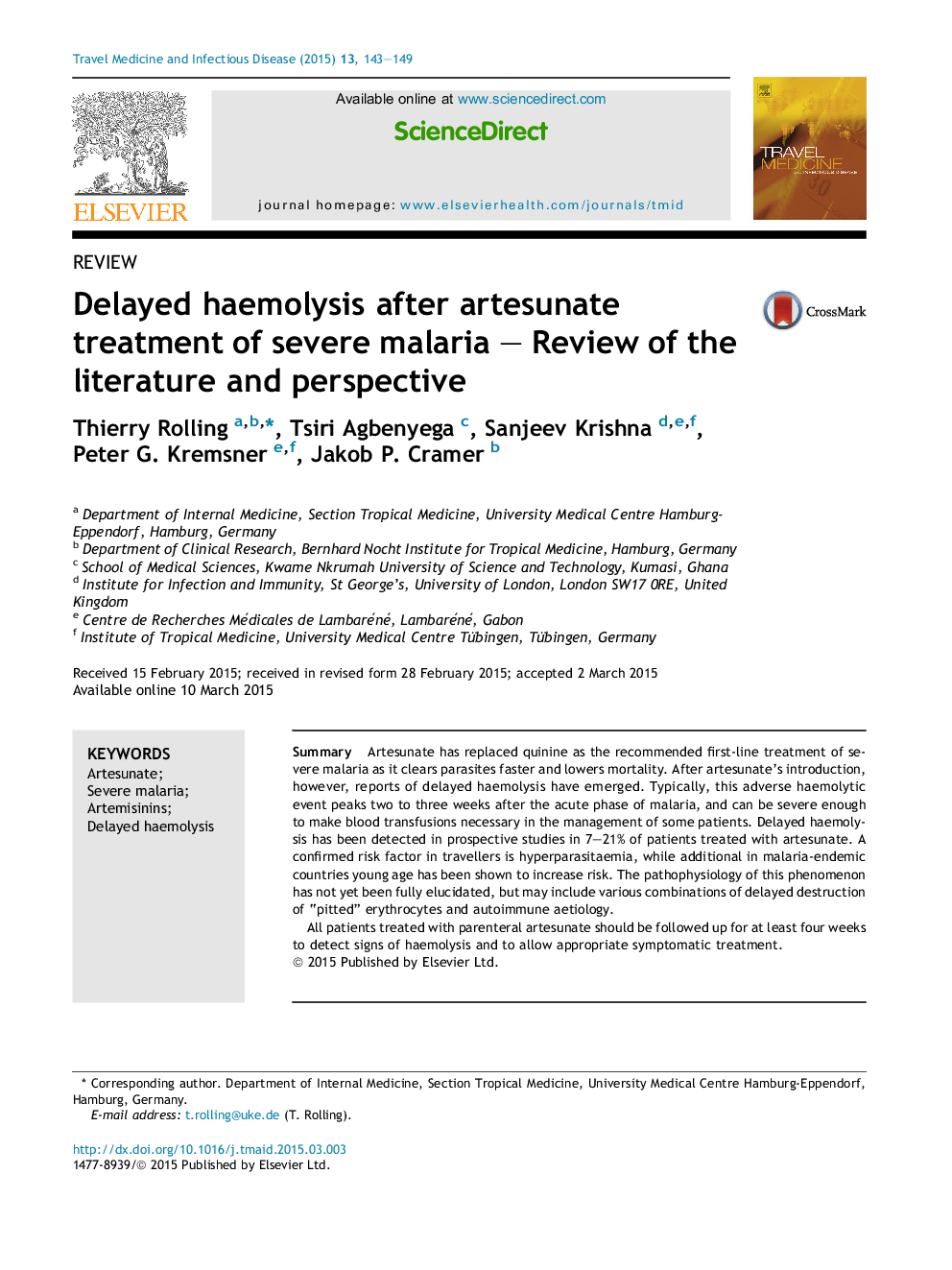| کد مقاله | کد نشریه | سال انتشار | مقاله انگلیسی | نسخه تمام متن |
|---|---|---|---|---|
| 3392758 | 1221292 | 2015 | 7 صفحه PDF | دانلود رایگان |
SummaryArtesunate has replaced quinine as the recommended first-line treatment of severe malaria as it clears parasites faster and lowers mortality. After artesunate's introduction, however, reports of delayed haemolysis have emerged. Typically, this adverse haemolytic event peaks two to three weeks after the acute phase of malaria, and can be severe enough to make blood transfusions necessary in the management of some patients. Delayed haemolysis has been detected in prospective studies in 7–21% of patients treated with artesunate. A confirmed risk factor in travellers is hyperparasitaemia, while additional in malaria-endemic countries young age has been shown to increase risk. The pathophysiology of this phenomenon has not yet been fully elucidated, but may include various combinations of delayed destruction of “pitted” erythrocytes and autoimmune aetiology.All patients treated with parenteral artesunate should be followed up for at least four weeks to detect signs of haemolysis and to allow appropriate symptomatic treatment.
Journal: Travel Medicine and Infectious Disease - Volume 13, Issue 2, March–April 2015, Pages 143–149
